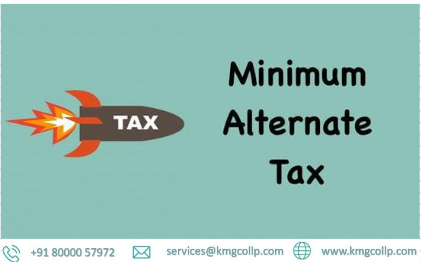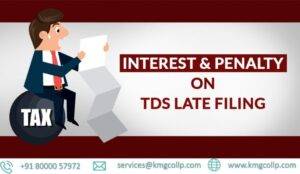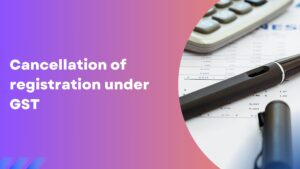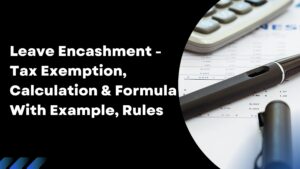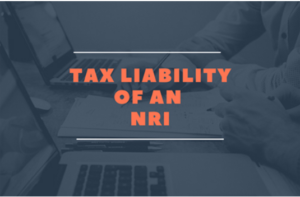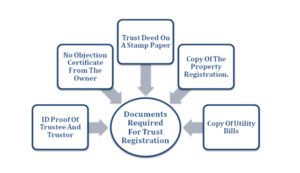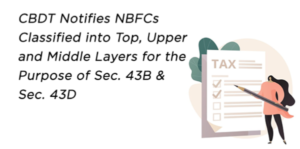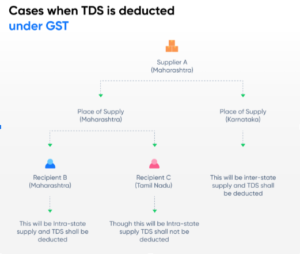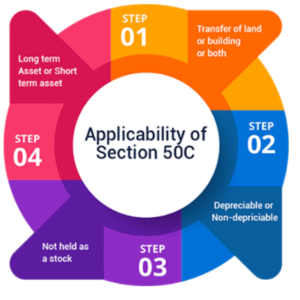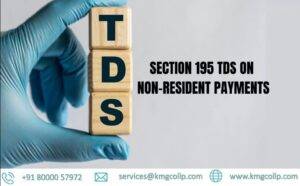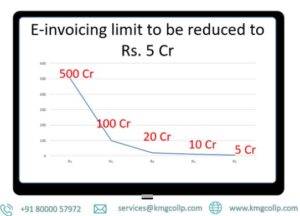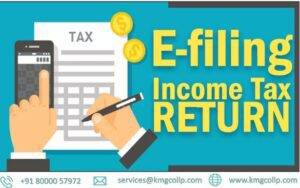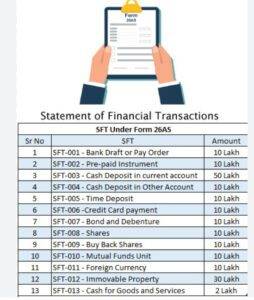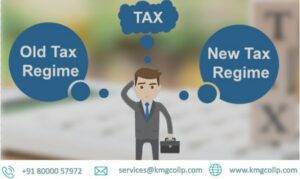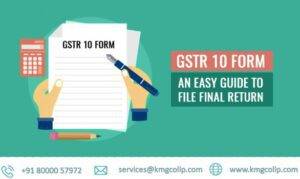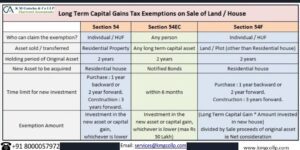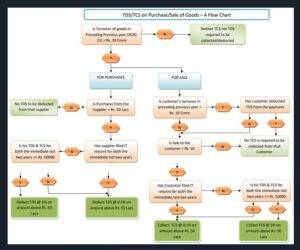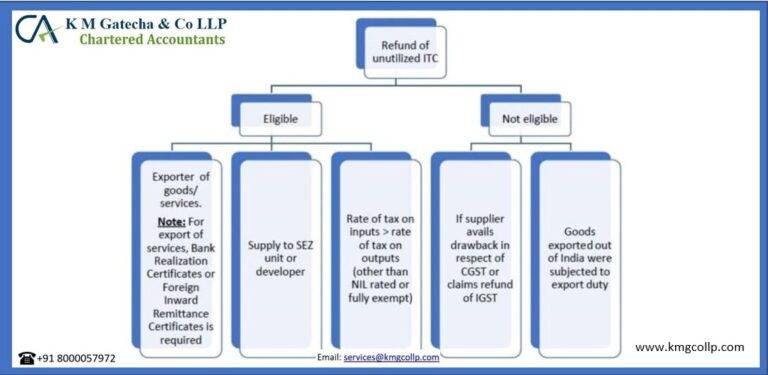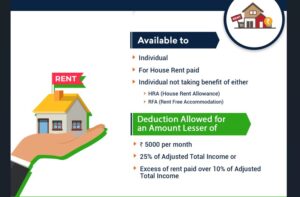
Minimum Alternative Tax (MAT) and its computation of book profit and MAT credit under section 115JB of Income Tax Act, 1961
- Introduction
The Minimum Alternative Tax (MAT) is a provision in direct tax legislation that restricts taxpayers’ access to tax deductions and exemptions so that they pay a “minimum” amount of tax to the government. The Finance Act of 1987 introduced MAT with effect from the assessment year 1988-1989 because of an increase in the number of businesses that pay no taxes. Later on, it was removed by the Money Act, 1990 and afterward once again introduced by Money (No. 2) Act of 1996, effective 1-4-1997. Companies in India are subject to AMT, which is referred to as the Minimum Alternate Tax (MAT) due to its “MAT credit” carry forward mechanism. A company can use the “excess” tax it pays as a result of MAT (as compared to its regular tax liability) in one year as a credit against its regular tax liability in a subsequent year.
- Objectives of MAT
The introduction of MAT aims to include “zero tax companies,” which, despite making substantial book profits and paying handsome dividends, do not owe any taxes as a result of a variety of tax breaks and incentives provided by the Income-tax Law.
- MAT Rate
As per Section 115JB, every taxpayer being a company is liable to pay MAT, if the Income-tax (including surcharge and cess) payable on the total income, computed as per the provisions of the Income-tax Act in respect of any year is less than 18.50% of its book-profit + surcharge (SC) + health & education cess.
(Note1:-On 20-Sep-2019 Finance Minister slashed MAT rate to provide relief to companies which continue to avail exemptions/incentives, the government has reduced the rate of Minimum Alternate Tax or MAT to 15%, from 18.5%)
(Note2:- MAT is levied at the rate of 9% (plus surcharge and cess as applicable) in case of a company, being a unit of an International Financial Services Centre and deriving its income solely in convertible foreign exchange)
- Applicability of MAT provisions
According to Area 115JB. ( 1) Regardless of anything else in this Act, if a company’s book profit is less than eighteen and one-half percent of its total income in any previous year relevant to the assessment year beginning on or after April 1, 2012, the book profit is considered to be the assessee’s total income, and the tax the assessee is required to pay on that income is equal to eighteen and one-half percent of the total income.
(2) Every assessee,—
(a) being a company, other than a company referred to in clause (b), shall, for the purposes of this Section, prepare its statement of profit and loss for the relevant previous year in accordance with the provisions of Schedule III to the Companies Act, 2013 (18 of 2013); or
(b) being a company, to which the second proviso to sub-Section (1) of Section 129 of the Companies Act, 2013 (18 of 2013) is applicable, shall, for the purposes of this Section, prepare its statement of profit and loss for the relevant previous year in accordance with the provisions of the Act governing such company:
From the above it can be observed that the provisions of MAT are applicable to every company whether public or private and whether Indian or foreign.
- Non-Applicability of MAT provisions
As per Explanation 4 to Section 115JB as amended by Finance Act, 2016 with retrospective effect from 1/4/2001, it is clarified that the MAT provisions shall not be applicable and shall be deemed never to have been applicable to an assessee, being a foreign company, if—
[As amended by Finance (No. 2) Act, 2019]
- the assessee is a resident of a country or a specified territory with which India has an agreement referred to in sub-Section (1) of Section 90 or the Central Government has adopted any agreement under sub-Section (1) of Section 90A and the assessee does not have a permanent establishment in India in accordance with the provisions of such agreement; or
- the assessee is a resident of a country with which India does not have an agreement of the nature referred to in clause (i) and the assessee is not required to seek registration under any law for the time being in force relating to companies.
Additionally, a foreign company whose total income consists of profits and gains arising from business referred to in Sections 44AB, 44BB, 44BBA, or 44BBB and which has been offered to tax at the rates specified in those Sections shall not be subject to the MAT provisions as inserted by the Finance Act, 2018.
According to Section 115V-O, the provisions of MAT will not apply to shipping income subject to tonnage taxation, i.e., tonnage taxation scheme as provided in Sections 115V to 115VZC. Additionally, Section 115JB (5A) states that MAT shall not apply to any income accruing or arising to a company from the life insurance business referred to in Section 115B.
- Computation of Book Profit as per MAT provisions
According to Explanation 1 to Section 115JB(2), for the purposes of Section 115JB, “book profit” refers to net profit as shown in the statement of profit and loss prepared in accordance with Schedule III to the Companies Act of 2013, minus certain items that are specified in this regard. The following are the items that should be increased or decreased:
(A). Positive Adjustment: Amount to be Added Back if Debited to Profit and Loss Account:
- Income-tax paid or payable and the provisions Income-tax including education cess, interest, dividend distribution tax (DDT) under the Income-tax Act, 1961.
- Amounts carried to any reserves, by whatever name called
- Amount or amounts set aside to provisions made for meeting liabilities, other than ascertained liabilities
- Amount by way of provision for losses of subsidiary companies
- Amount or amounts of dividends paid or proposed
- Amount of expenditure relatable to certain incomes (if such income is not subject to minimum alternate tax)
- Amount of Depreciation debited to Profit & Loss A/C
- Amount of deferred tax and the provisions therefor and the amount or amounts set aside as provision for diminution in the value of any asset.
- Amount standing in revaluation reserve relating to revalued asset on the retirement or disposal of such asset
- Amount of income/loss in the case of units referred to in Section 47(xvii)
(B). Negative Adjustments -Amount to be Deducted from Net Profit:
Amount withdrawn from reserves or provisions, if any such amount is credited to the profit and loss account.
Income exempt from tax : The following income, if credited to profit and loss account, shall be deducted—
long-term capital gain exempt under Section 10(38);
income exempt under other clauses of Section 10;
income exempt under Sections 11 and 12;
share of profit from an AOP on which no income-tax is payable in accordance with the provisions of Section 86 (applicable from the assessment year 2016-17);
(in the case of a foreign company) interest, royalty or technical fees chargeable to tax under Sections 115A to 115BBE, or capital gain arising on transactions in securities, if income-tax payable in respect of these incomes under normal provisions (other than provisions governing MAT) is less than the rate of MAT (applicable from the assessment year 2016-17); and
Royalty in respect of patent chargeable to tax under Section 115BBF.
Depreciation (other than because of revaluation of assets) debited to profit and loss account (applicable from the assessment year 2007-08 onwards)
Amount withdrawn from revaluation reserve credited to profit and loss account to the extent it does not exceed the amount of depreciation on account of revaluation of assets [applicable from the assessment year 2007-08].
Aggregate amount of unabsorbed depreciation and loss brought forward in case of a company against whom an application for corporate insolvency resolution process has been admitted by the Adjudicating Authority under Section 7/9/10 of the Insolvency and Bankruptcy Code (applicable from the assessment year 2018-19)
Amount of loss (before depreciation) brought forward or unabsorbed depreciation, whichever is less, as per books of account [not being a company which is covered by Item 12A (supra)]
Amount of profit eligible for deduction under Sections 80HHC, 80HHE and 80HHF
Profit of sick industrial unit
The amount of deferred tax, if any such amount is credited to the profit and loss account.
Amount of income/loss in the case of units referred to in Section 47(xvii)
- MAT Credit
A company must pay more than its normal tax obligation or its MAT obligation, as was discussed earlier. In the event that at whatever year the organization pays responsibility according to MAT, it is qualified for guarantee credit of MAT paid well beyond the typical duty risk in the resulting year(s).The arrangements connecting with convey forward and change of MAT credit are given in Segment 115JAA.
However, in the event that the amount of Foreign Tax Credit, or “FTC,” allowed against the MAT exceeds the amount of FTC admissible against the assessee’s tax liability under the normal provisions of the Income-Tax Act, the excess amount will not be taken into account when calculating FTC under this sub-Section.
- Carry forward and adjustment of MAT credit
The credit of MAT can be utilized by the company in the subsequent year(s). The credit can be adjusted in the year in which the liability of the company as per the normal provisions is more than the MAT liability. The set off in respect of brought forward MAT credit shall be allowed in the subsequent year(s) to the extent of the difference between the tax on its total income as per the normal provisions and as per the MAT provisions.
As discussed earlier, the company can carry forward the MAT credit for adjustment in subsequent year(s), however, the MAT credit can be carried forward only for a period of 15 years after which it will lapse.
FAQs
What is a book profit under 115jb(2)?
As per Explanation 1 to section 115JB(2) “book profit” for the purposes of section 115JB means net profit as shown in the statement of profit and loss prepared in accordance with Schedule III to the Companies Act, 2013 as increased and decreased by certain items prescribed in this regard. Thus, option (b) is the correct option.
What is book profit based on mat provisions?
Computation of Book Profit as per MAT provisions As per Explanation 1 to Section 115JB (2) “book profit” for the purposes of Section 115JB means net profit as shown in the statement of profit and loss prepared in accordance with Schedule III to the Companies Act, 2013 as increased and decreased by certain items prescribed in this regard.
How is tax computed on book profit?
Tax computed @ 15% (plus surcharge and cess as applicable) on book profit (manner of computation of book profit is discussed in later part). The tax computed by applying 15% (plus surcharge and cess as applicable) on book profit is called MAT.
What is mat & how is it calculated?
MAT is applicable to all companies, including foreign companies. MAT is calculated under Section 115JB of the Income-tax Act. Every company should pay higher of the tax calculated under the following two provisions: 1. Tax liability as per the Normal provisions of income tax act (tax rate 30% plus 4% edu. cess plus surcharge (if applicable).
Disclaimer: The materials provided herein are for informational purposes only and do not constitute legal, financial, or professional advice. Consult relevant laws and experts before acting on this information. Neither the author nor K M GATECHA & CO LLP is liable for any inaccuracies or omissions. This material is purely educational and not an advertisement or solicitation.
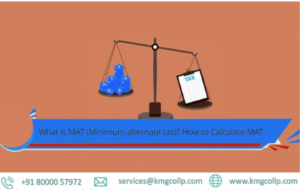
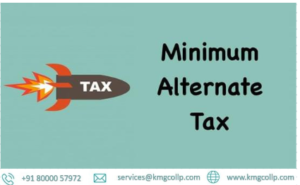
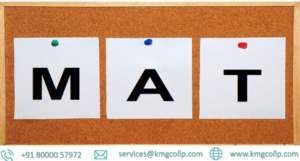

Table of Contents
Toggle
